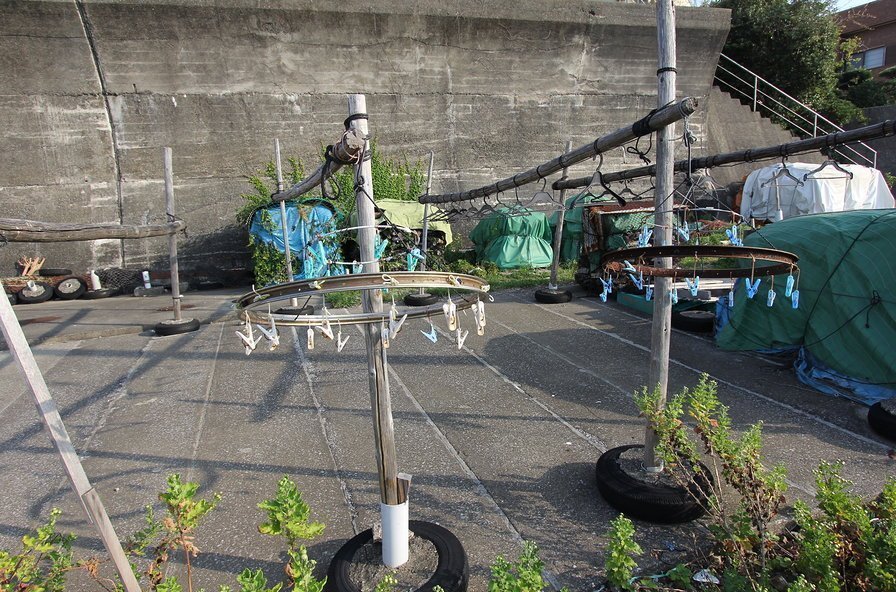
Many visitors to Japan know Mie Prefecture because of the venerable Ise Shrine; but if that is as far as they venture, they are missing half of the story. The Ise Shima National Park is the national park with the highest population, making it a unique place to see how local communities coexist with nature. In Shima City, on the far edge of the peninsula, you can not only see these traditions, but also taste them!

The sea is central to life in Shima
Shima has at least three seafood claims to fame: its spiny lobster catch, its bonito smoking workshops, and its Ama divers. Today, I got my fill of all three...

“Welcome!” proclaims this friendly Ama character at the entrance to my equally friendly accommodation, Takesho

A spiny lobster boat returns to harbour

Bonito flakes are most delicious when freshly shaved
The day began with a visit to Wagu port to see the spiny lobster (“Ise ebi” in Japanese) being brought in. The action took place around 6:30 am; luckily, it was only a few minutes away from Takesho, the inn where I am staying.

Neighbours sit and chat while they wait for the boats, but after the catch arrives, everyone works hard
Removing the lobster from the nets requires considerable skill, since those with broken legs or antennae fetch a much lower price. However, the workers do not receive a wage; rather, they are friends and neighbours who are “paid” with the other fish caught up in the nets.

Special hooks are used to disentangle the lobsters

The buyers consider the day’s catch at the nearby market
Goodbye for now to the lobsters; we’ll be meeting them again later... The next culinary delicacy on today’s menu was smoked bonito flakes.

Tenpaku-san, owner of the Tenpaku bonito smoking hut, loves welcoming visitors and posing for photos!

The fish are smoked until hard, then left to grow mould - as with blue cheese, this is essential to the flavour
Spiny lobster is a luxury food, eaten on special occasions such as New Year. Bonito, on the other hand, is so fundamental to Japanese cuisine that you may not even notice its subtle flavour in broths and other dishes. The meals offered to the gods of Ise Shrine twice a day since time immemorial include not lobster but bonito, smoked right here.

The stock made from 100% bonito with no added ingredients is so good you can drink it

The packages too are special, designed by Kyoto woodblock artist Tokuriki Tomikichiro and his son Michitaka

Today was media interview day!
On our way back, we sampled one more local delicacy: fish dried in the open air.

The brown fish in the middle are blowfish
Bonito and spiny lobster are caught in the Pacific Ocean, but on the other side of the peninsula is the picturesque Ago Bay, with around 60 islands and many pearl farms. It is normally tranquil, but is sure to become lively next May when the Ise Shima G7 Summit comes to Kashikojima...

No flamboyant sunset tonight, but the muted pinks and greys were very pretty

How about this little souvenir?
Tonight’s dinner with my local hosts showcased Shima’s other famous maritime tradition, the Ama divers. These women dive without any equipment to collect shellfish from the seabed. After diving, they warm up in small huts, grilling seafood over an open hearth.

Mitsuhashi-san, a real live Ama, grilled spiny lobster from this morning’s visit for us. Yum!

And I dressed up as an Ama... Glad I didn’t actually have to dive!
It was a great dinner, but the chance to see Mitsuhashi-san’s actual Ama hut this morning was even more memorable. Although less photogenic, it shows that Ama are not museum pieces, but a living profession. I was also impressed by how carefully they reuse everything.

You can buy plastic laundry hangers cheaply, but the Ama prefer to make use of what they have

Nowadays, 4 Ama share this hut, but in the past there were 18 or 20
Whether smoking bonito or diving for shellfish, the friendly residents of Shima clearly have a deep knowledge of and respect for the sea, and are glad to share its bounty with visitors. But in this case, a bite is worth a thousand words, so please go and taste for yourself...
 One of the largest online hotel and ryokan booking sites in Japan
One of the largest online hotel and ryokan booking sites in Japan
